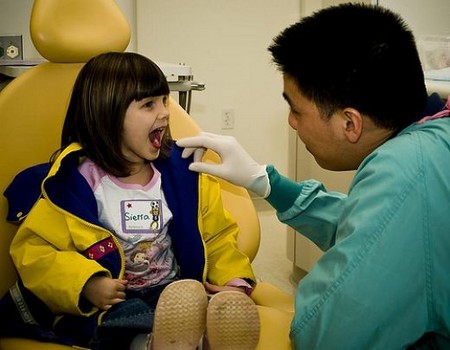Phobia is the irrational fear of a particular object or situation and many start in childhood. The most common of these can start at a young age and are known as simple phobias, for instance fear of an animal such as dogs, cats or spiders. Often the animal in question can be largely avoided, but for some children it can become a big problem. Older children can suffer from fears like being fearful of situations such as eating in public or having to write in front of others. Agoraphobia can also affect later teenage years, when the child becomes fearful of open places. When confronted with the source of their phobia or anxiety, the child may become extremely anxious and panicky. It is thought that simple phobias, such as the fear of spiders, may be passed on by family conditioning – if the mother is afraid of spiders, the child too will become fearful. Or the child may have been badly scared by a spider when small and has not overcome the incident. There are also some theories that phobias are a symbol of some deeper problem.
Behavioural therapy is commonly used in treating fears and phobias. This may involve slowly increasing exposure to the cause of the phobia. Relaxation techniques will also be used to help reduce stress. Alternatively, flooding may be used, when the patient, supported by their therapist, is fully exposed to the source of their anxiety.
What you can do
The fear or phobia may be manageable by avoiding its cause. If your child is afraid of an animal or insect, try to minimize any exposure. This can obviously prove difficult and, if the child’s fear is causing problems in normal family life, some sort of therapy may be needed to overcome it.
Treatment
Hypnotherapy
Hypnotherapists will use techniques to help the child use their unconscious mind to learn and rid them of their phobia. For instance, a child who is scared of anything coloured red will not need to be regressed back to when they were hit by a red car to get rid of their phobia, but will learn to disassociate the colour red with a negative feeling. Instead, positive feelings about the colour red may be suggested.
Kinesiology
A practitioner will use different balancing methods and muscle testing to help dispel any phobias or fears that the child is experiencing. The stomach would be particularly worked on, as it is seen as the organ related to both rational and irrational emotional stress. Phobias can obviously cause a lot of stress, so this will be worked on as mental stress can affect the body in other ways.
Acupuncture
The Chinese say that ‘at seven, children fall from heaven’. This means that they develop their own emotions, rebelliousness and possibly phobias. Until that age any phobia is more likely to be a mirror of a parental phobia, such as a fear of spiders. Treatment will usually be directed at giving the child self-confidence and self-awareness, and strengthening the kidney meridian which is held to be linked with fears and anxiety.
Bach Flower Remedies
The Remedies treat the emotions rather than the illness, so are useful in helping children’s fears and may help to generate positive feelings. There are different remedies that can be given depending on the type of fear – Mimulus may be given for known worries, while Aspen may be given for unknown fears which leads them to being generally anxious, and Rock Rose for panic and terror.
Other therapies that may be beneficial: aromatherapy, reflexology, acupressure, homoeopathy, herbal medicine, massage.
